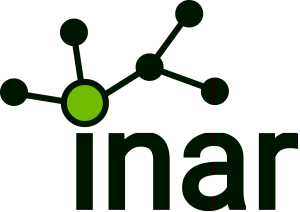
Every food we eat provides the body with a range of nutrients, which helps us stay healthy. And, if eaten in the right proportion according to one’s body weight, age and gender it can also aid in weight loss.
What defines our body’s composition is lean mass-muscle and free fat mass. So, to achieve fat loss, it is important to eat the right food at the right time.
To understand what food to eat at the right time, let’s first understand the working of our bodies. The body’s needs differ at different times of the day.
Morning: On waking up, your body has gone through a starvation period of no instant energy provided through food. The liver does carry enough glycogen but these reserves are used up extensively in the 10-12 hours fasting period through the night and thus, carbohydrate (glycogen) reserves are very low. Blood sugar levels are also low. Since carbohydrates are not readily available to support the body’s primary need for energy, the body breaks muscle protein to obtain fuel for energy because protein is the second preferred source of energy in the absence of carbohydrates. And hence the muscle is in a breakdown phase (catabolic state) in the morning. Fat, the concentrated source of energy, is also being slowly metabolised. Keeping this in mind, one must eat on waking up.
One must eat within an hour of rising to arrest the muscle breakdown, and fuel the glycogen stores of the body. Include a quick and simple fast absorbing carbohydrate and a quick fast absorbing protein source with the right blend of good fats. A blend of simple carbohydrates like a fruit and some oatmeal will release sugars in the bloodstream. Protein sources like egg whites or whey protein are ideal to halt the catabolism of the muscles.
Mid morning: Blood sugar levels are recovering from the morning meal. Muscle is rebounding but the aim is to keep the metabolism of the body operational. This is the time when one is running around doing chores. Therefore, one needs to take care to not let the blood sugar levels drop. So, a mix blend of quick and slow absorbing carbohydrates and protein would do the trick here.
Milk contains both casein and whey. Casein is a slow absorbed protein, which releases amino acids – the building blocks of proteins very slowly in the body. Whey is a fast absorbing protein, which releases amino acids fast in the body. Milk also contains carbohydrates, which slowly convert the lactose into readily used energy source glucose. Simple carbohydrates like fruits can also be had at this meal.
Lunch: The body should be well balanced at this time. But this is again the second largest meal of the day. Sustained energy is needed to allow one to sail through the afternoon activities. Very importantly, one needs to keep the muscle out from the possibility of going into the breakdown phase. Also, this meal will help in avoiding sugar cravings, which generally do occur in at mid afternoon as the sugar levels start to tumble. Essentially, one must incorporate a lot of raw fibre at this meal. Cruciferous vegetables like cabbage, cauliflower and brussels sprouts are high in fibre. Also, include Low glycemic index carbohydrates like whole wheat, jowar, bajra, ragi, quinoa etc. Low GI carbs release sugar very slowly in the bloodstream, thereby using less insulin. A sharp rise in the insulin activity promotes fat storage. So, low GI foods aid in fat loss.
Protein sources should be mixed with more emphasis on fast absorbing ones at this meal like eggs, chicken , fish, curds, sprouts, pulses, dals etc. For this meal, one must relevantly include good fats-essential fatty acids like monounsaturated and polyunsaturated fats. A vegetarian must switch to a flaxseed oil to receive omega-3 fats, as it is found in flaxseeds and fish. Omega-3 fats release EPA and DHA-known to reduce inflammation, improve blood flow, thus supporting muscle anabolism (new muscle formation). Omega-3 fats are also known to reduce the risks of various diseases like diabetes, cardiovascular diseases and cancer.
Mid afternoon snack: To keep up the body’s metabolism and to avoid an energy slump, one needs to eat a balanced snack. To promote more fat loss, it is wise to include nuts and seeds, the right source of good fats, with a tiny proportion of proteins. You can also eat a small portion of good medium GL carbs like brown rice poha and rye bread.
The best choice of protein at this time would be casein, in the form of homemade paneer, chicken or tofu. Slow released sugars in the form of fibrous carbs like vegetables, cereals like quinoa and amaranth would assist in the steady glycogen reserves of the liver. Monounsaturated fats like rice bran oil, olive oil, which are steady oils oxidise very slowly and ideally should be consumed.
Remember that one needs to allow muscle catabolism during a workout, as this forces the body to repair and build new muscle, thereby using the body’s fuel in the right manner and giving one a taut body with optimum muscle and less fat reserves. The rest of the times, one’s goal should be to minimise the muscle catabolism and include food to promote muscle anabolism.
